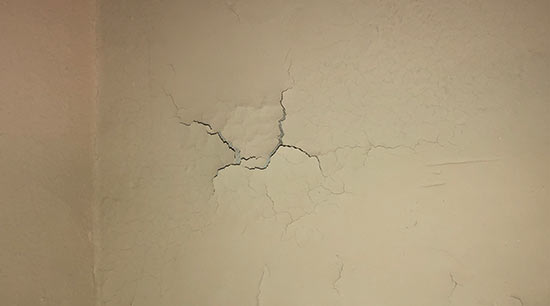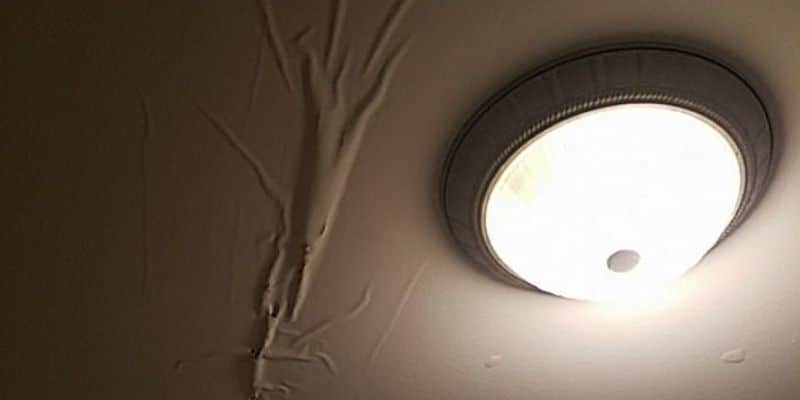When Walls Speak - Deciphering And Fixing Water Stains
When Walls Speak - Deciphering And Fixing Water Stains
Blog Article
What're your opinions concerning Indicators of Water Damage Behind Walls?

Water spots on wall surfaces are not pleasurable to the eyes. Sometimes it appears almost inescapable to experience water stains on wall surfaces in residences.
House owners living in moist regions continuously deal with the anxiety of water discolorations on wall surfaces. With all-around as well as exact info on the reasons of water discolorations and prompt repair work procedures, you will certainly constantly be a step ahead of such occurrences.
3 Typical Root Causes Of Water Discolorations on Wall Surfaces
Contrary to popular belief, water stains on walls do not always come from bad structure products. There are numerous sources of water stains on walls. These include:
Damp
When hot moist air meets with dry chilly air, it triggers water droplets to form on the walls of buildings. When there is vapor from food preparation or showers, this happens in washrooms as well as kitchen areas. The water droplets can tarnish the bordering walls in these parts of your house and infect various other areas.
Damp or condensation influences the roofing and wall surfaces of structures. This creates them to show up darker than other areas of the house. When the wall is wet, it develops an appropriate environment for the development of fungis as well as microbes. These might have negative effects on health and wellness, such as allergic reactions as well as respiratory problems.
Poor Water drainage
When making a building strategy, it is important to ensure sufficient drain. This will certainly avoid water from permeating into the wall surfaces. Where the drainage system is blocked or missing, underground dampness builds up. This web links to excessive dampness that you see on the walls of your building.
The leading cause of damp wall surfaces, in this case, can be a bad water drainage system. It can also be because of inadequate management of sewage pipelines that go through the building.
Pipe Leaks
A lot of homes have a network of water pipes within the wall surfaces. This makes sure that the pipelines are well away from the reach of damaging rats. It constantly increases the practicality of such pipes, as there is little oxygen within the walls. This inhibits corrosion.
Yet, a disadvantage to this is that water leak affects the walls of the building as well as triggers prevalent damages. An indicator of defective pipes is the look of a water tarnish on the wall surface.
Pro Suggestion
A houseplant in your home additionally raises its humidity. So, if your home is already damp, you might intend to present houseplants with marginal transpiration. An example of suitable houseplants is succulents.
Water Spots on Wall Surface: Repair Service Tips
When dealing with water spots, house owners would usually desire a fast solution. Yet, they would soon recognize this is detrimental as the water discolorations persist. Right here are a couple of valuable ideas that will direct you in the repair work of water stains on walls:
Verdict
Although nobody intends to have water spots on walls in their residence, it can occur to the most effective of us. This write-up provides you utilize, as you now recognize how to handle this problem if it does happen.
It is always best to hire expert solutions to assist fix the damages in your home.
Occasionally it seems virtually unavoidable to experience water stains on wall surfaces in homes.
In contrast to prominent idea, water spots on wall surfaces do not constantly stem from poor structure products. There are several reasons of water stains on wall surfaces. The water droplets can tarnish the surrounding walls in these components of your house and also spread to other locations.
Right here are a few helpful ideas that will lead you in the repair work of water discolorations on walls:
What To Do About A Water Stain On The Ceiling
Why This is Important
Not only are water stains a cosmetic issue, but they can also indicate that there is a leak in the home that needs to be fixed. Sometimes, this may be the first indicator of a bigger problem brewing or may have been a one time leaky issue. It is important to investigate to make sure it is under control before you possibly have thousands of dollars in repairs.
Identify the Cause of the Water Stain on the Ceiling and Where to Start
It is important to identify the cause of the water stain on the ceiling first so you can fix it. Start first with the roof to see if there are leaky shingles or missing shingles, missing flashing, or weakened seals around roof vents. You may need to get on top of the roof to look or call a professional to check for you. It is possible that water is coming into the home from the roof. So you will want to have the professional take a look to see if this is the issue.
Also, look in the attic to see if there is a pool of water and that will also help you to know if there is water leaking into the home.
Radiator or Air Handler on 2nd floor
In colder parts of the country, there may be a radiator on the second floor. Radiators are used to keep rooms warm in the cold months and do wear out or need replacing. Does the radiator have a pool of water underneath it or any dripping? If yes, this could be the problem and causing the water stain on the ceiling. Check the model of the radiator and see if it is something you can do yourself or call a professional to check the body, pipe, and the valve for leaks.
The same is true for those who have an air handler on the second floor. Did your AC stop working? Or do you see water leaking? The drip pan (if you have one) on an HVAC unit collects the water and it can become clogged and back up. The float switch (again, if you have one) will activate as soon as the water reaches a certain level and shut down the HVAC unit, thus not allowing the water to continue to flow. Make sure the HVAC doesn’t become clogged and checking this monthly is a good idea.
Upstairs Bathroom Can Cause a Water Stain on the Ceiling
Bathrooms are often the culprit as caulking wears out after about 10 years and needs replacing. Is the home older than 10 years? This may be the issue. While checking the caulking in the bathroom around the sinks, toilets, and shower/bath, also check for black mold in the shower. Might as well rule everything out while you are looking for the source.
Other areas to look at are toilets clogging and overflowing. Do you see water near the toilet on the floor? This could be the seal is broken on the toilet and it needs replacing. Also, adding caulk to the toilet to connect it to the floor is a good idea. If the toilet is continuously running, you can shut off the water and do the water meter test.
Write down the number on the water meter and then turn off the water for three hours. When you turn it back on, check the number on the water meter. If it has increased, then you have a leak in the indoor plumbing.
Taking care of these areas is essential as sewer gases can also be escaping. Sometimes these issues will soak the ceiling below and clog in sinks and drains in the shower can also cause flooding in a bathroom.
Put a Drop Cloth on the Floor
With goggles on and gloves, put a drop cloth on the floor. Then, take 3 glasses of warm water and one cup of bleach and mix it together. Set up a ladder and climb up to the stain. Use a sponge that is soaked in the concoction to rub it on the water stain to get it to come off. Take a spray bottle of plain water and spray the stain to get the bleach mixture off. This is important because you want to be able to prime it and paint it. Take a dry towel and rub the stain to help it dry faster. Next, put painters tape around the ceiling if the spot is near the walls. Apply an Oil Based, Stain Blocking Primer
Apply an oil based, stain blocking primer that is mold resistant that matches the ceiling. It is important to put the primer on first so the paint doesn’t soak into the ceiling. If you have a flat ceiling, you can use a paint roller with an extension to apply it. Once the primer has dried, apply the paint. If you have a textured ceiling, a spray on primer might work better.
Choose a Latex or Alkyd Ceiling Paint
The latex ceiling paint is water-based and dries faster than the oil-based paints and also is thicker than wall paint. Make sure that the paint matches the ceiling color. Using a roller, paint it on over the primer and let it dry for up to four hours. Then, apply a second coat and let it dry. The second coat should make the stain disappear.
https://insideandoutpropertyinspectors.com/water-stain-on-ceiling/

I hope you enjoyed reading our section about How to Remove Water Stains from Walls and Ceilings. Thanks for taking time to browse our piece. Sharing is good. Who knows, you may just be helping someone out. Thanks for taking the time to read it.
Book
Report this page